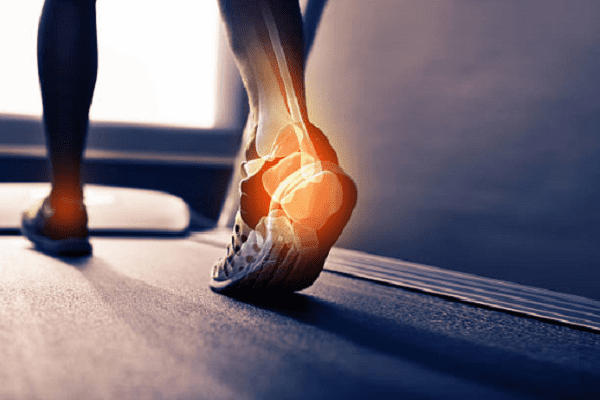Musculoskeletal system >>>> Plantar fasciitis is the cause of the heel spur
Plantar fasciitis is the cause of the heel spur.

The plantar tendons (plantar fascia), which attach on one side to the heads of the metatarsal bones, and on the other to the calcaneal tuberosity, are constantly overloaded, since in an upright position a person weighing half his body weight transfers pressure to the aponeuroses of the foot. When the degree of load exceeds the tensile strength of the tendon, micro-ruptures appear in its tissues, which, with a decrease in loads, are able to recover themselves, but with chronic trauma, this regeneration process is slowed down. This is how plantar fasciitis develops, which is accompanied by pain in the arch of the foot (especially in the morning).

Gradually, to compensate for the excessive load on the tendon in the area of the calcaneal tuberosity, bone tissue grows, and bone protrusions appear - osteophytes, which injure the surrounding soft tissues when walking and provoke an inflammatory process. These bony growths in the area of the calcaneus are called the heel spur in everyday life.
The heel spur is painful when stepping on the heel, but the diagnosis is confirmed on the basis of an x-ray, where osteophytes will be visible. In their absence, the symptoms are associated with other diseases: arthritis, heel bursitis, Reiter's syndrome.
Treatment of plantar fasciitis and heel spur begins with conservative methods:
- Reduce pressure on the area of the foot and heel using orthopedic insoles with a special depression under the heel,
- Reduce body weight to reduce stress on the plantar fascia,
- Refuse to carry weights that create additional overloads of the plantar tendons,
- The plantar fascia is unloaded by taping (using an adhesive plaster or a special tape, the foot is wrapped in such a way that the tape takes on part of the plantar fascia load),
- When working with walking or standing for a long time, it is necessary to take regular breaks to relieve the tendon or change the type of work,
- Physiotherapy, baths, anti-inflammatory creams in the case of a heel spur can alleviate the condition by eliminating inflammation in the osteophyte area,
- The use of extracorporeal shock wave therapy for breaking bone growths is effective.
- To relieve pain and inflammation, blockages with glucocorticosteroids are performed (hydrocortisone, dysprospan are injected into the painful area).
If the therapeutic treatment of the heel spur does not bring results, surgical removal of the bone protrusions with excision of the damaged surrounding tissues is prescribed. But after the operation, it will be necessary to follow the principles of conservative treatment in order to prevent the growth of bone protrusions again.

Read

Read



























